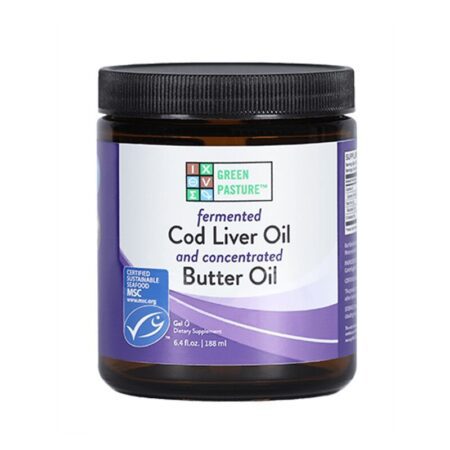Cavities are one potential ailment that affects everyone regardless of age or gender.
We all have unique bodies that will experience certain diseases and not others during the course of our lives.
My father had a saying when I was a child: “Ignore your teeth and they’ll go away”, with an emphasis on the fact that it isn’t a possibility but a certainty.
One of the few guaranteed things in life is that if we choose to not have proper oral hygiene our mouths will quickly decay, and for this it is one of the first things children need to learn to do on their own.
Now you can PROTECT YOUR TEETH with NANO DENTITE Tooth Armor
Having pearly white, glimmering teeth is certainly more attractive than brown or yellow teeth, but that isn’t the only benefit of brushing your teeth at least twice a day.
Tooth and gum decay is one of the most painful ailments, producing a constant and increasing soreness that can have a sharp sting when touched or agitated.
Mouth pain makes it very hard to think clearly, as the pain is incessant, and can even make falling asleep an arduous task.
Fortunately, proper oral hygiene is something we have enormous control over. Prevention is an absolute necessity, and sometimes it takes an experience of harsh oral pain to shake a person out of lazy habits, such as going to sleep without brushing.
You may be interested in Sky Kubby’s Cavity Healing Protocol
What is a cavity?
The strict definition is a hole that develops in the center of a tooth. This hole opens access to nerve endings below the tooth and in the gums, and once food, or anything at all, touches these nerve endings the result is a sharp pain.
The mouth is naturally teeming with many types bacteria because it is the first step in digestion. Certain beneficial bacteria are needed to help our teeth break down foods into smaller and smaller particles.
The teeth have a tough job: They need to continuously crush food into smaller pieces, day in and day out. Technically, teeth are hard bones that need to remain hard to do their job.
Enamel is the protective coat over our teeth. Once enamel becomes becomes eroded there is a significantly increased risk of decay.
If we don’t clean out stagnant bacteria in our mouths, the bacterial multiplies and starts breaking down the teeth and gums themselves. Mixed with un-swallowed food particles, it can create a garbage heap-like environment.
One of the surest ways to create this toxic zone in your mouth is to not brush your teeth before going to bed because the food and bacteria that accumulated during the day will sit and fester in your mouth for many hours while your sleep.
The mixture of stagnant food and accumulated bacteria creates a substance called plaque. Our mouths are in a constant battle-like environment between a strong fortress wall – the enamel – and the invading forces – plaque.
Perhaps the most powerful ally of plaque is sugar. When we eat sugary foods or drinks the sugar mixes with the bacteria and forms an acid. This acid slowly dissolves the tooth, which can eventually become a hole in the middle of it.
The teeth in the back of our mouth are generally at a greater risk of decay because we do the most food chewing with them, and there are larger crevices for the food to get lodged into.
As previously mentioned, even though children have teeth that will be eventually replaced by their adult teeth, their little teeth are also at risk of decaying.
Children’s taste buds have not fully developed so they do not have complex preferences for food, usually preferring something very salty or very sugary.
Lazy brushing habits, sugary sodas, and candy are the classic culprits that lead to the breaking down of the tooth enamel in children, with cries of pain being the final step before filling the hole, or pulling it out, becomes necessary.
While everyone is at some risk of tooth decay, there are some habits that significantly increase those risks:
-
Drinking carbonated colas, many of them having upwards to 50 grams of sugar per can. Even just half this amount of sugar is a significant intake for one serving.
-
Eating sticky candies that are difficult to remove from the teeth even with moderate brushing (if a dentist needed more customers, selling sticky candies to children would create a boon for the need of his/her services).
* Fluoridated toothpaste. Fluoride, an industrial chemical waste and confirmed carcinogenic neurotoxin, also causes an acidic breakdown of the enamel, causing a condition called fluorosis.
-
Eating disorders, such as bulimia, which is deliberately vomiting after eating as a way to lose weight. The powerful stomach acids that enter the mouth when throwing up break down the enamel, and when done repeatedly over a period of time is one of the fastest ways towards tooth and gum decay.
-
Not flossing teeth to remove stuck food particles that, with the help of bacteria, slowly deteriorate the gums.
How do you know if you have a cavity?
The most direct way to tell if you have a developing or fully formed hole in a tooth is the sharp pain that accompanies chewing with that tooth.
Some people ignore the pain and just chew with other teeth or on the other side of the mouth. This coping mechanism can be very detrimental because the longer a person waits the larger the hole with grow.
When a person experiences a soreness around the base of a tooth it can indicate damaged nerve endings underneath the tooth, which is another sign that one’s oral hygiene needs a level-up.
If you suspect you have one, looking at the tooth in question will reveal the answer. They are usually brown or black holes in the center of the tooth that are very sensitive to the touch.
Signs of a cavity
The signs that a person is not taking care of their teeth and gums are fairly easy to predict and diagnose.
Even children are able to understand the logical progression of poor health choices, too much sugar and candy, laziness towards brushing and cleaning teeth, and the inevitable consequences.
Another tell-tale sign is bad breath, a symptom that can be very difficult to ignore if you are on the receiving end of it.
It is common that a person will not known that they have bad breath, so it is an act of kindness to indicate to a friend or family member that they may need to address an area of their mouth that may be decaying.
Oral hygiene is a basic set of skills that every human being needs to learn from an early age. We’ve all met someone or have seen a photo of a person with brown, decayed teeth.
Not only can it be unsightly but causes significant pain and problems over the long-term. But the positive side is that cavities are an aspect of health we can prevent with good habits and conscientious attention long before problems may arise.

























